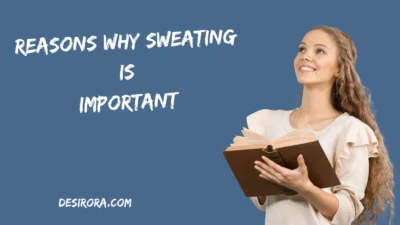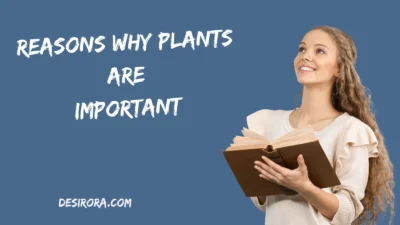Creativity often gets pigeonholed as “art stuff” — painting, writing, music. But really, it’s the ability to connect ideas, spot fresh possibilities, and bring something new into the world. In daily life, work, relationships — creativity fuels innovation, problem-solving, self-expression, and growth.
When we ask why creativity is important, we’re really asking: how does this spark inside each of us shape our world?
In this article, you’ll discover the deep benefits of creativity, how it works, how to boost it, and real-life examples showing its impact.
The Many Faces of Creativity
Creativity isn’t one-size-fits-all. It manifests in different types, and each one has a unique strength you can use. Here are some key types of creativity:
| Type | What It Means | Example / Use |
| Expressive creativity | Using art, music, writing or other media to express ideas, emotions | A poet turns sorrow into verse |
| Problem-solving creativity | Finding new solutions to challenges | An engineer devises a simpler water filter |
| Innovational creativity | Creating something original — a product, business model, or tool | A tech startup launches a novel app |
| Combinational creativity | Mixing existing ideas in new ways | A chef fuses flavors from different cuisines |
| Adaptive creativity | Tweaking or improving existing systems | A teacher revises a lesson plan for better engagement |
These types often overlap in real life. The same person might use expressive creativity to share feelings and problem-solving creativity to fix issues at work.
Why Creativity Is Important: Core Benefits
Boosts Problem-Solving and Critical Thinking
When you train your creative muscles, you become better at tackling complex, ambiguous problems. Instead of just using standard methods, you begin to see alternative angles.
“Creativity is thinking up new things. Innovation is doing new things.” – Theodore Levitt
That shift—from just thinking to doing—makes a big difference. Creative thinkers can break patterns, reframe problems, and find novel solutions when others get stuck.
Drives Innovation and Competitive Edge
In business and technology, creativity is the backbone of innovation. Companies that stay creative survive disruption; those that don’t often languish.
- Apple, Tesla, Google — these names come up often because they don’t just copy; they invent.
- Even small teams can innovate: a marketing group might craft a campaign nobody’s seen before.
Creativity lets you see what others miss, giving you an edge.
Enhances Personal Growth and Self-Expression
Creativity is deeply personal. Whether you sketch, write, dance, or code, you’re expressing an internal world. That expression builds self-awareness and grows your voice.
Plus, when you create, you often fail — and failing teaches resilience, patience, and humility.
Improves Mental Health and Well-Being
Engaging in creative activity can help reduce stress, anxiety, and depression. It gives your brain a “flow state” — a space where time fades, and you’re completely absorbed. That absorption is therapeutic.
Multiple studies show:
- Art and music therapy help people process trauma.
- Journaling improves clarity and emotional regulation.
Fosters Collaboration and Team Synergy
In groups, creativity helps mix perspectives. When people brainstorm, they spark off each other’s ideas, creating something richer than any individual could.
Creative teams adapt better in change, respond faster to crises, and bring diverse solutions to problems.
Future Readiness and Lifelong Adaptability
We live in a fast-changing world. New technologies, shifting economies, changing norms — creativity is your survival skill. It helps you adapt, pivot, and reinvent yourself again and again.
How the Creative Process Works
Creativity doesn’t appear fully formed—it evolves through stages. Understanding these phases helps you nurture creative thinking.
- Preparation
You gather information and dive into research. You absorb. - Incubation
You step away. You let the subconscious mind work—maybe while showering, walking, or daydreaming. - Illumination / Insight
That “Aha!” moment when an idea surfaces. - Verification / Implementation
You test, refine, and put your idea into action.
Real-life example: Thomas Edison didn’t just sit at a bench and expect the light bulb to appear. He researched, experimented, failed thousands of times, and only then commercialized the invention.
Real-Life Uses: Creativity in Action
Creativity in Business
- Product development: Airbnb disrupted the hotel industry by imagining unused homes as stays.
- Marketing & branding: Guerrilla marketing campaigns — like flash mobs or surprise pop-up events — capture attention because they’re unexpected.
- Process optimization: Toyota’s “Kaizen” — small, continuous improvements — is all about creative tweaks.
Creativity in Education
- Teachers use project-based learning (students create something) instead of plain lectures.
- STEM/STEAM education brings art into science classes, blending creative thinking with technical skills.
- Creative assignments (e.g. design your own board game) let students apply knowledge inventively.
Creativity in Daily Life
- Cooking without a recipe, using what’s in your fridge.
- Rearranging furniture for better flow.
- Writing in a journal, doodling, or improvising music.
Creativity and Technology
- AI + human collaboration: People use generative AI (like image or text tools) as a creative partner—not a replacement.
- Hackathons: Teams gather to ideate under time pressure; many tech products originate here.
How to Cultivate Creativity
Here are practical habits and exercises you can start today:
- Ideate daily: Pick a mundane object (pen, spoon) and list 20 alternate uses.
- Mind-mapping: Start with a central idea and branch out related thoughts.
- Brainstorm with constraints: For example: “How could I solve this if I only had 5 dollars?”
- Mix disciplines: Read widely—philosophy, science, fiction. Cross-pollinating ideas builds new insight.
- Take breaks / rest: Sometimes stepping away sparks breakthroughs
- Keep a creativity journal: Record dreams, loose thoughts, sketches
- Collaborate and share: Bounce ideas off trusted others
Over time, these habits shift how your brain works. You begin seeing patterns, asking questions, and building connections more naturally.
Idioms & Expressions about Creativity
- “Thinking outside the box”: Not sticking to usual rules
- “Color outside the lines”: Break conventions
- “The light bulb went off”: You had a sudden idea
- “Paint with a broad brush”: Look at things generally, not in narrow detail (sometimes negative)
- “Spark of imagination”: The initial idea that triggers a bigger one
Idioms like these show how deeply rooted creativity is in language and how we perceive innovation.
Synonyms & Related Terms
Here’s a quick table of words you might see when searching for “creativity”:
| Word | Nuance / Use |
| Innovation | Emphasis on novelty + application |
| Imagination | Mental creation of images or ideas |
| Originality | Being novel or unique |
| Inventiveness | Skill in devising or creating |
| Creative thinking | Process-oriented term |
| Ingenuity | Cleverness, especially in problem-solving |
| Vision | Foreseeing new possibilities |
| Brainstorming | Generating ideas, often in groups |
Grammar & Style Notes
- Use active voice (“She designed a solution”) rather than passive (“A solution was designed by her”).
- Prefer contractions (“you’re,” “don’t,” “it’s”) to make tone friendlier.
- Vary sentence lengths: mix shorter punchy lines with slightly longer ones to maintain rhythm.
- Use personal pronouns (“you,” “we,” “our”) to build connection.
- Avoid fluff or filler — every sentence should add value.
- When introducing jargon (e.g. “divergent thinking,” “lateral thinking”), define it immediately.
Example usage:
“Divergent thinking” means generating many possible solutions; “convergent thinking” is narrowing those down to the best one.
Examples That Inspire
Example 1: Pixar’s Creative Culture
Pixar is famous for encouraging “failed” ideas. They run postmortems, iterate, and push people to take risks. Their films succeeded because the team tolerated imperfect prototypes and let creative voices speak.
Example 2: The Design Sprint
Google Ventures popularized the “5-day design sprint” — a structured framework that pushes a team to ideate, prototype, test, and iterate in a week. It’s a creativity workflow applied to business.
Example 3: Personal Side Project
A software engineer builds a free app over weekends just for fun. It flops at first, but she keeps improving. Later, it becomes widely used — and even spawns a new startup.
Overcoming Blocks to Creativity
Even creative people hit walls. Here are common blocks and how to bust through them:
| Block | What It Looks Like | Strategy to Overcome |
| Fear of failure | You avoid starting | Reframe failure as experiment; start small |
| Perfectionism | You can’t move forward until it’s “just right” | Set a timer and force draft / prototype |
| Lack of time | “I’m too busy” | Schedule short creative slots—even 10 minutes helps |
| Self-criticism | “That idea is foolish” | Practice freewriting or sketching without judging |
| Comparison / doubt | You see others’ work and feel small | Remind yourself: your perspective is unique |
Creativity Across Cultures & Contexts
Creativity doesn’t look the same everywhere. In some cultures, collaborative ideas and modesty might dominate; in others, bold individual expression is prized. Understanding fields (arts, science, business) and cultural norms can help you tailor creative efforts.
For instance:
- In engineering teams in Japan or Germany, creativity may express as efficiency improvements more than wild new designs.
- In artistic subcultures, breaking norms is celebrated.
The point: creativity adapts to context.
Put It Into Practice: A 7-Day Creativity Kickstart
Here’s a mini-challenge you can try:
| Day | Activity | Notes |
| Day 1 | Freewrite 10 minutes “What if…” | No judgement, stream of consciousness |
| Day 2 | Sketch 5 random objects | Even stick figures — explore shape |
| Day 3 | Brainstorm possible solutions to a small personal problem | E.g. “How can I reduce friction in my morning routine?” |
| Day 4 | Combine two unrelated ideas | E.g. “guitar + cooking” → musical recipe app |
| Day 5 | Interview someone in a different field | Ask them how they think & approach problems |
| Day 6 | Prototype a tiny version of an idea | Paper mock-up, sketch, or simple demo |
| Day 7 | Reflect & share | What surprised you? Keep the idea going |
This kind of structured play builds your “creativity muscle.”
Why Creativity Helps in Specific Roles
Let’s see how creativity adds value to different professions:
- Entrepreneur / Startup Founder: Creativity leads to novel products, marketing, and strategies.
- Teacher / Educator: Creativity helps present content in engaging ways, adapt to students’ needs.
- Engineer / Developer: Creative thinking identifies elegant solutions, optimizations.
- Manager / Leader: Creativity in team structure, problem resolution, culture-building.
- Marketer / Designer: This is their home turf; campaign ideas, UX solutions, visual storytelling.
No matter the role, creativity elevates the everyday tasks.
Measuring Creativity (Yes, You Can!)
You can’t always quantify creativity, but here are proxies and assessment ideas:
- Number of distinct ideas generated in brainstorming
- Ratio of ideas to implemented ones
- Feedback / user testing results (how novel or useful are your outputs)
- Time to pivot or adapt (how quickly you respond to failure)
- Self-reflection journals: track moments you felt unusually inspired
Measuring helps you see growth and iterate on your creative habits.
Myths & Misconceptions
Let’s debunk a few:
- Myth: Creativity is only for the artistic
False. Engineers, cooks, strategists — all use creativity. - Myth: You’re either born creative or not
False. Everyone can improve with practice. - Myth: Creativity happens only in isolated silence
Partially false. While solitude helps for some, many thrive on collaboration and noise. - Myth: You need a perfect environment
False. Great ideas often come from constraints or discomfort.
Summary of Key Takeaways
- Creativity is more than art — it’s thinking differently, solving problems, innovating, and expressing yourself.
- It yields benefits in work, well-being, relationships, and future adaptability.
- Understanding the creative process helps you nurture it.
- You can cultivate creativity with habits like freewriting, mind-maps, cross-discipline learning, and reflection.
- Everyone faces blocks — recognizing and using strategies to overcome them is essential.
- Creativity adapts to roles, contexts, cultures, and can be measured (in part).
Frequently Asked Questions
Q: Can creativity be learned, or is it innate?
Yes — while some people may show early creative traits, creativity is a skill you can develop with deliberate practice and mindset shifts.
Q: How do I know if I’m being creative enough?
Don’t aim for quantity alone. If your ideas are branching, evolving, and you feel you’re building connections you didn’t before, that’s progress.
Q: Does creativity only belong in the arts?
No. Creativity plays a role in science, business, education, engineering, daily life — anywhere you need fresh thinking or new combinations.
Q: How do I balance structure and free creativity?
Use frameworks (time slots, guidelines) to prevent chaos, but allow some flexibility for unexpected inspirations. For example, do a 20-minute freewrite inside your 60-minute work block.
Q: What if I feel stuck and uninspired?
Switch context (go for a walk), consume something different (listen to jazz, visit a museum), or try a constraint exercise (e.g. “design something only using three words”). Sometimes stepping away triggers new ideas.
Conclusion
Creativity is the ingredient that transforms routine into remarkable. It thrives when we nurture it, push boundaries, and allow ourselves to fail, iterate, and reimagine. From business and education to personal growth and mental well-being, the reasons why creativity is important are vast, deep, and lifelong.
It’s not just about producing art — it’s about cultivating a mindset that sees connections, embraces possibility, and responds to change with imagination. Start small, remain curious, and invite creative moments into every corner of your life. Your future self will thank you.

Aldous Huxley was a visionary writer and philosopher whose works explored human nature, consciousness, and the future of society. His ideas continue to challenge minds and inspire generations.



